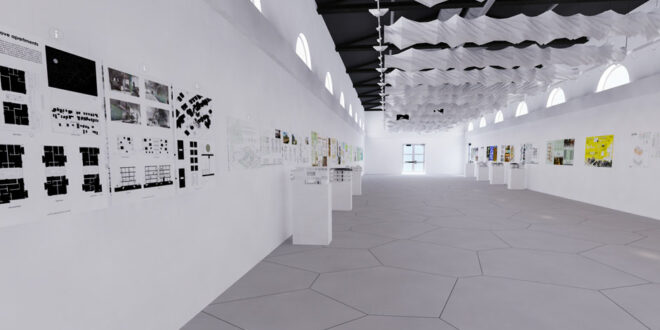The School of Architecture’s RAD Lab is venturing into mixed reality projects to enhance the educational experience.
Imagine walking inside the Roman Colosseum in AD 72 and exploring every brick in the structure, which took nine years to build but still partially stands in the center of Rome.
You are not in Italy. Instead, you’re a student sitting in a classroom at the University of Miami School of Architecture wearing Oculus glasses. This is the kind of experience that a mixed reality (virtual and augmented reality) or metaverse can offer and the kind of work the School of Architecture’s RAD (Responsive Architecture + Design) lab has used in experiments.
“For architects, this technology is a game-changing tool,” said Rudolf “Rudy” El-Khoury, dean of the school and director of the RAD Lab.
For students of architecture, mixed reality, or XR, allows them the flexibility to immerse themselves inside buildings to not only explore how they are built but also to design their own environments and contribute to this virtual world.
RAD Lab’s latest project in this technology was created a few weeks ago. Students from multi-studio classes coordinated by Professor Eric Fairley imagined how the West Grove neighborhood of Coconut Grove could be redesigned from single-family to multi-family units.
An exhibition of 40 student projects is on display at Coconut Grove’s Woman’s Club. However, this exhibition ended in late September after a short run.
In order to expand the exhibition and bring it to a wider audience, the RAD Lab has digitally recreated the exhibition and placed it in a virtual form Korach Gallery.
“We reproduced the show in the metaverse, down to every detail,” El Khoury said. “On your computer screen, you can navigate the space, look around and zoom in on the different panels on the wall, or call up additional information.” An improved version of the Virtual Gallery for VR headsets will be available soon for a more immersive experience.
El Khoury said the metaverse is already affecting many disciplines but is a transformative medium for architects. Next semester, he and Inderit Alushani, Research Associate in the RAD Lab and Lecturer in the School of Architecture, will participate in a “Design in the Metaverse” class that will enable future architects to collaborate in new ways and leverage technology for more advanced designs. For the first three weeks of the course, students will meet as avatars in a virtual studio to co-create a piece of the metaverse.
According to Al-Khoury, discussions are taking place with potential donors who will invest in a project in which the RAD Lab staff and students will participate in building a digital twin of Miami Beach and all its historic buildings.
“We can reproduce them very accurately, and when you visit them in the metaverse they look very real,” he said. “The recreation will preserve them for future generations, against the negative effects of climate change – at least as a virtual experiment. It also provides the city and industry partners with a digital model for multiple uses, from stage planning scenarios to running simulations that depict the effects of sea level rise and extreme weather events.”
El Khoury noted that new technology will become important for architects as the profession has become more collaborative and global.
“Suppose there are architectural firms with subsidiaries here and in China,” he explained. “Architects can work here and then when they finish their work it can be picked up by those in China who seamlessly continue working in the same virtual space.”
These architects can meet virtually inside the structure they are building, exchange information, and redesign the areas they want to change. “Therefore, it enables immersive and seamless collaboration despite the geographical distance,” Al-Khoury said.
Developers’ use of XR technology as a virtual complement to the traditional showroom is rapidly gaining momentum. The RAD Lab is exploring this practice, possibly in collaboration with Yupix, a Wynwood-based company that is a leader in the field. RAD Lab and Yupix are currently discussing powered research opportunities to enhance the architecture experience in the metaverse.
The potential of XR beyond architectural applications is huge and RAD Lab researchers are keen to take on interdisciplinary projects or assist teams in other academic units with technology support, such as a recent collaboration with the Frost School of Music that brought virtual images into the concert hall.
Last semester, a group of students took part in the course “Religion and Holy Places in the Age of Virtual Reality and Artificial Intelligence” which was taught in virtual reality. It was an interdisciplinary collaboration, which included professors Kim Greenfeeder, Director of the Interactive Media Program in the School of Communication, William Green of the Department of Religious Studies, and Dennis Hector of the School of Architecture.
The creative studio at the Otto G. Richter Library also provides opportunities for classes to immerse themselves in different virtual worlds.
El-Khoury noted, “The pedagogical potential of the XR is limitless.”
Originally posted 2022-11-16 09:44:50.
